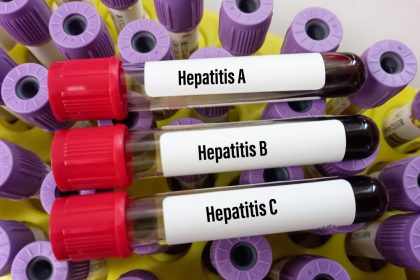That common belief that your immune system inevitably deteriorates with age might be more myth than reality. While conventional wisdom has long held that immune function naturally declines as we get older, making us more vulnerable to everything from infections to cancer, emerging research paints a far more nuanced picture.
Rather than a universal decline, the aging immune system appears to undergo a complex remodeling that leaves some functions diminished while others remain robust or even strengthen. This evolving understanding challenges many assumptions about what aging inevitably means for health and resilience. For adults concerned about immune vulnerability as they age, this newer science offers both reassurance and important insights into how to support the immune system’s natural strengths through later decades of life.
The outdated view of immune aging we’ve all accepted
The traditional narrative about immune aging has painted a consistently gloomy picture that most health professionals and the public have accepted without question for decades. This perspective deserves reexamination in light of newer evidence.
According to this conventional view, the immune system follows a simple trajectory of decline beginning somewhere around age 60. This deterioration supposedly affects all aspects of immunity equally, leading to increased vulnerability across the board. Medical textbooks and health websites often present this decline as inevitable and universal, affecting everyone regardless of their health habits or genetic factors.
This negative perspective partly emerged from early research that examined limited aspects of immunity, particularly the production of new immune cells. Studies indeed showed that the thymus gland, responsible for maturing important T-cells, gradually shrinks with age and produces fewer fresh immune cells. This observation, while accurate, led to overgeneralized conclusions about comprehensive immune deterioration.
The focus on vulnerability created a self-reinforcing cycle where increased infections in some older adults seemed to confirm the narrative of inevitable decline. However, this interpretation overlooked the significant percentage of older adults who maintain robust immune responses well into their 80s and beyond, treating them as outliers rather than evidence challenging the prevailing view.
Medical practice reinforced this perspective through age-based recommendations that sometimes assumed immune incompetence, such as prescribing stronger antibiotics for older adults with infections or recommending specialized vaccines based solely on age rather than individualized immune assessment. These practices, while well-intentioned, further cemented the idea that immune aging follows a predictable, universal pattern of deterioration.
Public health messaging amplified these concerns, particularly around seasonal illnesses, often emphasizing age itself as a primary risk factor rather than addressing the specific health conditions that actually drive increased vulnerability. This messaging reinforced the notion that age inevitably means immune compromise, creating unnecessary fear among healthy older adults.
What actually happens to immunity as we age
Rather than universal decline, current research reveals that the aging immune system undergoes a complex remodeling process affecting different components in distinct ways. This nuanced picture offers a more accurate understanding of immune changes throughout life.
Innate immunity, your body’s first-line defense system that responds immediately to threats, remains remarkably stable throughout life. Neutrophils, macrophages, and natural killer cells that quickly identify and attack pathogens maintain much of their functionality with age. This preservation explains why many older adults still effectively fight off routine exposures to pathogens without developing symptoms, contrary to what a simple decline model would predict.
Adaptive immunity, which creates tailored responses to specific threats, shows more variable changes. While the production of entirely new immune cells does decrease, memory responses developed earlier in life often remain strong or even strengthen with age. This means older adults frequently maintain robust protection against pathogens encountered previously through either infection or vaccination, sometimes demonstrating stronger secondary responses than younger adults.
Inflammatory regulation undergoes significant shifts with age. Many older adults experience what researchers call “inflammaging,” a state of chronic low-grade inflammation. However, this represents dysregulation rather than weakening, with the immune system actually showing heightened activity in certain inflammatory pathways while response coordination may become less precise. This explains the seemingly contradictory observation that aging can involve both increased inflammation and specific immune deficiencies simultaneously.
Vaccination responses demonstrate this nuanced remodeling particularly clearly. While completely novel antigens may generate somewhat reduced initial responses in older adults, boosting existing immunity often produces robust protection. This pattern explains why some vaccines work equally well across age groups while others may require adjusted dosing or formulation for older recipients.
Microbiome interactions add another dimension to immune aging. The community of beneficial bacteria living in and on our bodies influences immune function significantly, and these populations shift with age. Evidence suggests maintaining diverse, healthy microbial communities can substantially support immune function throughout life, potentially offsetting other age-related changes.
Cellular senescence, where aged cells stop dividing but remain metabolically active, plays a complex role in immune aging. While some senescent immune cells contribute to dysfunction, others appear to develop specialized functions beneficial for certain types of immune surveillance, particularly against abnormal cells that might become cancerous.
The strengths that develop with immune experience
Beyond merely preserving function, certain aspects of immunity actually improve with age due to accumulated immunological experience and adaptation. These strengths often go unrecognized in discussions of immune aging.
Cross-reactive immunity develops through decades of exposure to various pathogens, creating broader protection than typically seen in younger individuals. This expanded recognition capacity means older immune systems often identify and respond to novel threats that share similarities with previously encountered pathogens, providing unexpected protection against certain new challenges. This phenomenon helps explain why some older adults showed surprising resilience against novel pathogens despite their supposedly “vulnerable” immune status.
Autoimmune regulation often improves with age, contrary to common assumptions. While autoimmune conditions can occur at any age, the risk of developing new autoimmune disorders actually peaks in middle age and then declines. This suggests that longer-lived immune systems develop better tolerance mechanisms that prevent inappropriate attacks on the body’s own tissues, representing a sophisticated form of immune maturation rather than decline.
Cancer surveillance capabilities show complex age-related changes that don’t fit a simple decline narrative. While certain aspects of anti-tumor immunity decrease, others remain robust or strengthen. The adaptive immune system’s ability to recognize cancer cells based on previous exposures to similar cellular abnormalities can actually improve with immunological experience, creating more sophisticated monitoring for potentially dangerous cellular changes.
Pathogen discrimination abilities often sharpen with immune experience, allowing for more precise targeting of threats while minimizing collateral damage to healthy tissues. This refinement represents an important form of immune learning that continues throughout life, allowing older immune systems to mount more efficient responses that preserve energy and resources while still effectively eliminating threats.
Mucosal immunity, which protects vulnerable surfaces like the respiratory and digestive tracts, shows remarkable preservation with age. These front-line defense systems maintain much of their protective capacity throughout life, especially when supported by healthy lifestyle factors. This preservation helps explain why many older adults effectively resist respiratory infections despite assumptions about age-related vulnerability.
Secondary response strength, the ability to mount powerful reactions to previously encountered threats, often remains robust or even increases with age. This “immune memory” explains why many older adults demonstrate surprisingly effective immunity against pathogens they’ve previously encountered, sometimes showing stronger and faster responses than younger adults facing the same threats for the first time.
What actually makes some older adults vulnerable
When immune vulnerability does occur with advancing age, research increasingly shows that specific factors beyond age itself typically drive these changes. Understanding these real causes helps separate modifiable risks from inevitable aging processes.
Chronic disease impact on immunity dwarfs the effects of chronological age alone. Conditions like diabetes, cardiovascular disease, and obesity create specific immune impairments through mechanisms including chronic inflammation, metabolic dysfunction, and circulatory limitations. Studies comparing healthy older adults with younger individuals with chronic conditions often find worse immune function in the chronologically younger but metabolically compromised group.
Nutritional status exerts profound effects on immune capability across the lifespan. Specific deficiencies common in some older adults, particularly inadequate protein, zinc, selenium, and vitamins D, C, and B6, create immune vulnerabilities independent of age itself. When these nutritional factors are controlled for, many age-associated immune differences significantly diminish or disappear.
Physical inactivity contributes substantially to immune aging through multiple pathways. Sedentary behavior accelerates thymic involution, reduces circulation of immune cells, and increases inflammatory signaling. Conversely, physically active older adults consistently demonstrate immune profiles more similar to those of younger individuals than to their sedentary age peers, suggesting activity levels may influence immunity more than chronological age.
Sleep disruption, which increases in prevalence with age, significantly impairs multiple immune functions from antibody production to viral defense. Studies manipulating sleep in various age groups demonstrate that sleep quality often matters more than age for maintaining optimal immune responses, with well-rested older adults frequently showing better immune function than sleep-deprived younger individuals.
Stress accumulation affects immunity through both psychological and physiological pathways. Chronic stress accelerates immune aging through mechanisms including elevated stress hormones, oxidative damage, and telomere shortening. The cumulative stress burden throughout life, rather than age itself, appears to drive much of what we perceive as age-related immune decline.
Social isolation, which increases in prevalence with advancing age due to factors like retirement, mobility limitations, and loss of contemporaries, creates measurable immune impairment independent of chronological age. Studies consistently show that socially engaged older adults maintain more youthful immune profiles than isolated individuals, highlighting connection as a critical factor in immune resilience.
How to support your aging immune system effectively
Rather than accepting immune decline as inevitable, research suggests specific approaches that support the aging immune system’s natural strengths while addressing its actual vulnerabilities. These strategies leverage current understanding of immune aging to maintain resilience.
Vaccination optimization becomes increasingly important with age, but with an approach informed by newer understanding of immune remodeling. While following standard age-based vaccination recommendations remains important, discussing personalized timing and potential dosing adjustments with healthcare providers can significantly improve protection. For example, some older adults benefit from receiving certain vaccines earlier in the season when their immune systems can develop optimal responses before peak exposure periods.
Exercise provides perhaps the most powerful intervention for maintaining youthful immune function with advancing age. Regular physical activity preserves thymic function, reduces harmful inflammation, improves immune cell circulation, and enhances vaccination responses. The type matters less than consistency, with both moderate aerobic exercise and strength training showing significant benefits for immune maintenance. Research indicates that previously sedentary adults who begin exercise programs can reverse measurable aspects of immune aging within months.
Nutritional support for aging immunity extends beyond basic adequacy to strategic optimization. Protein requirements actually increase with age, with research suggesting many older adults need 1.0-1.2 grams per kilogram of body weight daily for optimal immune cell production. Mediterranean-style eating patterns show particular benefits for immune aging, likely due to their combination of anti-inflammatory compounds, prebiotic fibers, and balanced macronutrients that support multiple aspects of immune function.
Sleep prioritization becomes increasingly important for immune maintenance with age. Practices that support continuous, high-quality sleep, including maintaining consistent sleep schedules, creating restful sleep environments, limiting evening screen exposure, and addressing conditions like sleep apnea, show substantial benefits for immune function in older adults. Some research suggests that improving sleep quality alone can normalize certain immune parameters previously attributed to inevitable age-related decline.
Stress management through evidence-based approaches like mindfulness meditation, tai chi, or structured relaxation techniques provides measurable immune benefits. These practices reduce levels of stress hormones that accelerate immune aging while improving regulatory aspects of immunity. Regular engagement with stress-reduction practices has been shown to maintain more youthful patterns of immune gene expression with advancing age.
Social connection maintenance deserves recognition as a legitimate health intervention rather than merely a lifestyle preference. Regular meaningful social interaction preserves natural killer cell activity, improves inflammatory regulation, and enhances vaccination responses in older adults. Even during periods when physical gathering proves challenging, maintaining connection through alternative means provides measurable immune protection.
Microbiome nurturing through appropriate diet, selective use of fermented foods, and regular physical activity helps maintain the beneficial bacterial communities that support immune function throughout life. Fiber-rich diets feeding beneficial gut bacteria show particular promise for maintaining balanced immunity with age, potentially reducing the inflammaging that contributes to many age-associated conditions.
The emerging picture of immune resilience across the lifespan
Current research is reshaping our understanding of immune aging in ways that emphasize resilience and adaptation rather than inevitable decline. This evolving perspective offers important insights about immunity throughout life.
Individual variation in immune aging highlights the limitations of age-based generalizations. Studies tracking immune parameters across the lifespan consistently find that chronological age predicts far less of the variance in immune function than factors like health behaviors, nutritional status, and genetics. This individuality explains why some 85-year-olds demonstrate immunity comparable to average 40-year-olds while some middle-aged adults show premature immune aging.
The reversibility of many age-associated immune changes challenges assumptions about inevitable decline. Intervention studies show that various aspects of immune aging respond to appropriate lifestyle modifications regardless of when they’re implemented. Even adults who adopt improved nutrition, exercise, and stress management practices in their 70s or beyond demonstrate measurable rejuvenation of specific immune parameters, suggesting plasticity persists throughout life.
Resilience mechanisms develop with immunological experience, creating systems that compensate for certain age-related changes. The aging immune system demonstrably adapts to its own altered physiology, developing alternative pathways to maintain essential functions even as specific components change. This adaptability explains why predicted consequences of certain immune changes often fail to materialize in healthy older adults.
The evolutionary perspective on immune aging provides important context often missing from medical discussions. The human immune system evolved during times when reaching advanced age was relatively uncommon, suggesting it lacks specific adaptations for very long lifespans. However, this same perspective highlights that maintaining robust immunity into older age clearly proved advantageous for family and community survival, meaning our immune systems contain inherent capacity for longevity when properly supported.
Centenarian immune studies provide particularly valuable insights about successful immune aging. People who live past 100 typically show distinctive immune signatures characterized not by preserving youthful patterns but by developing well-regulated alternative configurations that maintain effectiveness while limiting inflammatory damage. These models of exceptional longevity demonstrate that the goal for immune aging should be optimal function rather than simply maintaining youthful characteristics.
The comprehensive understanding emerging from current research suggests that while the immune system undoubtedly changes with age, these alterations represent adaptation and remodeling more than deterioration. With appropriate support, the aging immune system continues providing effective protection throughout the lifespan, drawing on accumulated experience to complement its evolving capabilities. Rather than viewing immune aging as a problem requiring intervention, we might better understand it as a sophisticated adaptation deserving appropriate support.

















